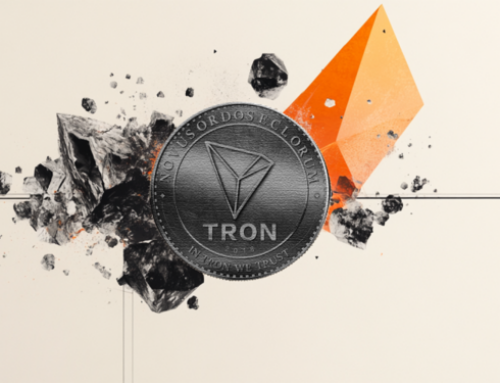How To Invest In Web3 In 2025
May 11, 2025
Web3 is the next evolution of the internet, where decentralized networks, blockchain and digital assets reshape how we interact, own and transact. As interest grows, investors are exploring ways to get started, with choosing the right Web3 wallet being a key first step.
This guide covers secure asset management, digital assets, DeFi, and the intersection of AI and blockchain.
Understanding The State Of Web3 In 2025
In 2025, Web3 is a key part of the digital economy, with blockchain technology powering applications beyond cryptocurrencies. Major institutions like BlackRock have embraced its potential, with CEO Larry Fink comparing tokenization to “email itself” for assets. Real-world assets, such as stocks and real estate, are now easily tokenized and traded, offering faster, transparent transactions.
Regulations have also improved, with discussions around clearer frameworks for blockchain, and U.S. lawmakers proposing bipartisan laws for digital assets. This regulatory progress and institutional adoption have made Web3 more secure and accessible for investors.
Why Invest In Web3?
Investing in Web3 offers access to a rapidly growing ecosystem of decentralized technologies that aim to transform industries ranging from finance and gaming to supply chain management and digital identity. Web3 assets, including cryptocurrencies, decentralized finance tokens, and non-fungible tokens, provide opportunities for diversification beyond traditional stocks and bonds.
Beyond diversification, Web3 investments can offer enhanced security, transparency and control over assets. Blockchain technology ensures that transactions are secure and verifiable, while decentralized platforms reduce reliance on intermediaries. As regulations become clearer, more institutions implement Web3 and new use cases appear, investment opportunities in the space keep growing.
7 Ways To Invest In Web3 In 2025
Investing in Web3 in 2025 offers a wide range of options, each catering to different interests and risk levels. You can buy cryptocurrencies like Bitcoin and Solana, explore decentralized AI platforms or invest in tokenized real-world assets like real estate. DeFi lets you earn interest or borrow without banks, while Web3-related stocks and exchange traded funds (ETFs) provide indirect exposure to digital assets. Play-to-earn gaming allows you to earn crypto through gameplay, and joining decentralized autonomous organizations offers a chance to participate in Web3 governance and decision-making. Understanding these options can help you build a diversified Web3 investment strategy.
1. Investing in Crypto
Cryptocurrencies are a direct way to invest in Web3. Bitcoin is often seen as digital gold, while Solana offers fast transactions for decentralized apps. Stablecoins like USDC maintain a stable value by being pegged to traditional currencies.
Investors can buy cryptocurrencies on exchanges like Coinbase or Kraken and store them securely in Web3 wallets like MetaMask or Ledger. Since anyone can create a cryptocurrency, thorough research is essential. Evaluate each project’s team, technology, and security measures to avoid scams and protect your assets.
2. Investing In Decentralized AI
Investing in decentralized AI is a way to support and profit from the next wave of artificial intelligence without relying on big tech companies. One of the best examples is Bittensor, a blockchain-based platform where anyone can help build and improve AI models. Instead of being controlled by a single company, Bittensor is a network where people can earn TAO tokens by creating, testing or refining AI tools.
Bittensor’s unique setup uses “subnets,” which are smaller communities that focus on specific AI tasks, like language translation or image recognition. These subnets compete to provide the best results, and those who contribute useful work earn rewards. This decentralized approach makes Bittensor different from traditional AI companies, giving users more control and allowing anyone to take part. If you believe in the future of AI and want to invest, owning TAO tokens or supporting active subnets can be a good way to get involved.
3. Investing in Real-World Assets (RWAs)
Real-world assets are physical or traditional financial assets represented as digital tokens on a blockchain. These can include anything from real estate and commodities to stocks and bonds. There are two main types of RWA tokens: fungible tokens, like ERC-20, which represent divisible assets (such as currencies or gold); and non-fungible tokens (NFTs, like ERC-721), which are used for unique assets like real estate or fine art. Tokenizing these assets allows them to be bought, sold and traded quickly and securely on blockchain networks.
Investing in RWA’s through Web3 has several advantages. It makes these assets easier to trade, more transparent and more accessible. For example, instead of needing a large amount of money to buy an entire property, you can buy a small piece of it as a token. Blockchain technology also keeps records secure and accurate, making asset management simpler. As more assets get tokenized, this approach could become a central part of the Web3 world.
4. Decentralized Finance Investments
Decentralized finance offers a way to invest in financial products without relying on traditional banks or intermediaries. Instead, DeFi uses blockchain technology to create a decentralized, transparent system where users can lend, borrow, trade and save with crypto assets. DeFi platforms, often accessed through dApps (decentralized applications), enable peer-to-peer transactions, instant loans and trading without brokers. Popular DeFi activities include lending crypto for interest, obtaining loans without paperwork, and trading assets directly with other users.
Building on DeFi can include RWA’s. Tokenizing assets like real estate or commodities makes them usable within DeFi protocols, creating more liquidity and investment opportunities. For example, MakerDAO uses RWAs as collateral to issue its stablecoin, DAI. This blending of traditional and blockchain-based finance can lead to more diverse investment options while reducing systemic risks.
5. Decentralized Autonomous Organizations (DAOs)
Decentralized Autonomous Organizations are online communities where members make decisions collectively without a central leader. They use blockchain technology and smart contracts which are automated programs carrying out actions when certain conditions are met. MakerDAO, one of the most well-known DAOs, runs on Ethereum and uses a protocol to maintain DAI, a cryptocurrency designed to match the value of the U.S. dollar without relying on banks or governments.
Once you find a DAO that interests you, join the community, participate in discussions and complete tasks. Some DAOs require governance tokens, like MakerDAO’s MKR, which allows members to vote on proposals. DAI is created when users lock up assets like ETH as collateral, and members manage the system collectively to ensure DAI’s stability.
6. Crypto ETFs
Bitcoin exchange-traded funds offer a simple way to invest in bitcoin without directly owning it. These funds can be classified into two types: spot ETFs, which hold actual Bitcoin, and futures ETFs, which track Bitcoin price using contracts. Several Bitcoin ETFs offer diverse ways to invest in the cryptocurrency. ProShares Bitcoin Strategy ETF (BITO) focuses on futures contracts, while ARK 21Shares Bitcoin ETF (ARKB) and VanEck Bitcoin Trust (HODL) provide direct spot exposure. Among them, iShares Bitcoin Trust ETF (IBIT) by BlackRock stands out due to its market capitalization, making it the most popular option.
Ethereum-focused ETFs are available, each offering a range of investment options.
Investing in crypto ETFs provides benefits like diversification and liquidity, but it also involves risks, such as counterparty risk and a lack of direct asset ownership. While there are other crypto-based ETFs and more are expected to launch, they are not established as Bitcoin-based ETFs.
7. Play-to-Earn (P2E) Gaming
Play-to-earn crypto gaming lets players earn digital assets like cryptocurrencies or NFTs through in-game activities. Unlike traditional games where achievements have no real-world value, P2E games reward players with assets they can own, trade or sell. Built on blockchain networks like Ethereum and Solana, these games create player-driven economies where digital items hold actual value, making gaming a potential source of income.
Popular P2E games include Axie Infinity, where players collect and battle creatures for tokens like SLP and AXS. In Decentraland, users can buy, sell and monetize virtual land using MANA tokens. The Sandbox offers a metaverse platform where players can create, own and trade digital assets using SAND tokens. These games show how blockchain technology can turn gaming into an investment opportunity.
Risks And Challenges Of Investing In Web3
Investing in Web3 offers exciting opportunities but comes with significant risks. One of the critical challenges is security. Web3 wallets, which store digital assets, can be vulnerable to hacking, phishing attacks or user mistakes. Choosing a secure Web3 wallet is essential, but even the best options can be compromised if users don’t follow good security practices. And because Web3 is decentralized, there’s often no customer support to help if something goes wrong.
Regulatory uncertainty is another challenge. While proposed U.S. legislation is being evaluated, a concrete structure has yet to be implemented. Market volatility is also a concern, with Web3 assets experiencing sudden price swings. Finally, with so many new projects launching, investors risk putting money into scams, poorly managed platforms or unsustainable ventures.
Bottom Line
Investing in Web3 offers exciting opportunities, but it comes with risks. Security is a major concern, so choosing a secure Web3 wallet and practicing safe habits is essential. Regulatory uncertainty and market volatility also pose challenges, making thorough research crucial for avoiding scams and making informed investment decisions.
Web3’s growth is transforming industries, from finance to gaming. Popular options include crypto ETFs, play-to-earn games, decentralized finance and tokenized real-world assets. Understanding these options and their risks can help you navigate this rapidly evolving space.
Search
RECENT PRESS RELEASES
Related Post




